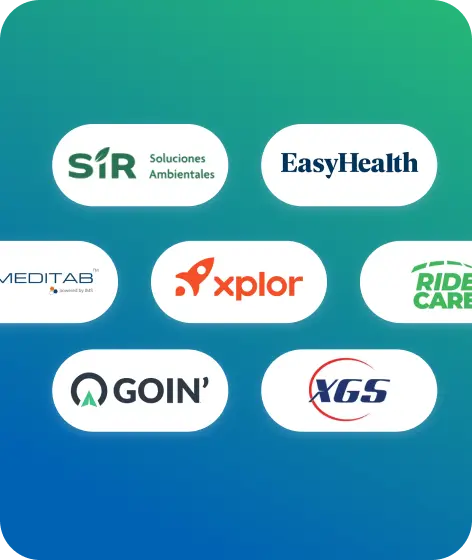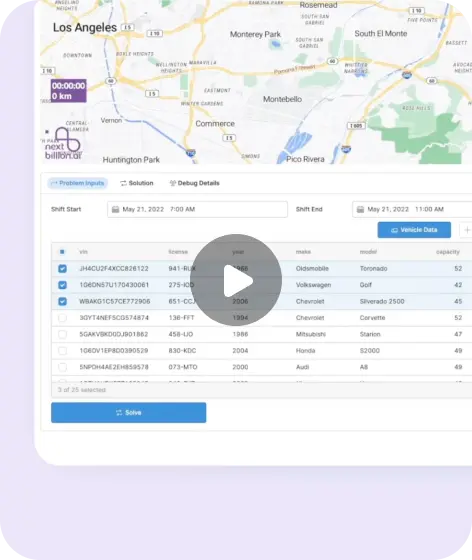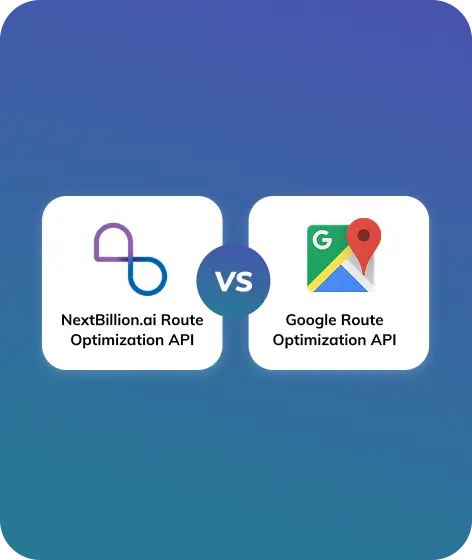Top 3 Reasons Why Businesses Switch to NextBillion.ai

API-first routing &
navigation platform
NextBillion.ai is built for API-first applications. Our sophisticated, plug-and-play APIs let you focus on your core tasks. Seamlessly integrate with your tech stack and leverage enterprise-grade scalability for faster development cycles and launches.

Fast and powerful
optimization engine
Upgrade to NextBillion.ai for faster optimization and advanced business-critical features. Access 50+ constraints. Gain control over travel and vehicle costs. Optimize task sequences and more to keep your business roadmap on track.

Truck-specific optimal
routes
NextBillion.ai offers out-of-the-box support for truck routing, a feature that Routific doesn’t provide. Our system takes into account truck dimensions and type of goods for more efficient and regulation-compliant routing and navigation.
Join the Ranks: Startups to Enterprises Trust Our Routing and Navigation Platform.





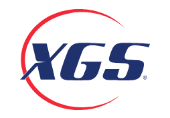


















Enterprises Choose Us for Our Hands-On Approach





Beyond Routific’s Reach:
Industries Choosing NextBillion.ai
NextBillion.ai bridges the gap for industries where Routific lacks critical features.

Long Haul Trucking
Plan safer long-distance routes with truck-specific parameters, such as HAZMAT, axle load, avoid service road.

On-Demand Delivery
Ensure timely doorstep deliveries through dynamic route optimization and real-time traffic considerations.

Last-Mile Delivery
Benefit from advanced task sequencing and prioritization features to minimize failed deliveries.

Non Emergency Medical Transportation (NEMT)
Optimize patient journeys with advanced scheduling, task sequencing and real-time traffic considerations.

Field
Services
Sequence tasks efficiently, prioritize urgent needs and maximize technician productivity.

Middle-Mile
Logistics
Get truck-compliant routes and configure costs per vehicle for efficient deliveries.
FEATURE COMPARISON
NextBillion.ai vs. Routific
| Features | NextBillion.ai | Routific |
| Multiple time windows support | ||
| Open-ended route planning | ||
| Optimization engine performance | Fast and accurate | Slow |
| Support for truck-specific routes | ||
| Custom objective functions | Limited support | |
| Real-time traffic & restrictions | Dynamically calculated and updated. |
Simulated with no support for incorporating restrictions. |
| Support for user-defined travel and travel costs | ||
| Routing and map customizations | ||
| Optimization constraints | 50+ hard and soft constraints |
Limited options |
| Complementary APIs & map tools | Limited options | |
| Custom pricing | Flexible pricing options based on tasks, assets or API calls. |
Only per-vehicle pricing option |
The NextBillion.ai Advantage Over Routific

Traffic and custom map
data-aware routing
Unlike Routific’s static simulations, NextBillion.ai accounts for real-time traffic and road restrictions to create dynamic routes that adapt to changing conditions. This ensures your routes and ETAs align with the actual on-the-ground conditions.

Flexible pricing for
predictable costs
With NextBillion.ai, you get custom pricing based on the number of tasks, assets or API calls. Unlike Routific’s vehicle-based fixed cost structure, our flexible model improves cost predictability and ensures you only pay when your vehicles are in use.

Building blocks for
end-to-end optimization
We go beyond route optimization. Utilize our complementary APIs to fit any complex workflow. Think road editing, clustering, geofencing, navigation, live tracking and more, all geared towards delivering tangible business impact.
See What Our Customers Are Saying

A great product that fills a distinct hole in the market.
NextBillion solves the problem of providing a high-performance mapping platform at scale. We use them to generate large distance matrices that we use to solve unique geospatial routing problems that arise in the short-haul trucking industry. We generate efficient delivery schedules in real time for hundreds of vehicles.
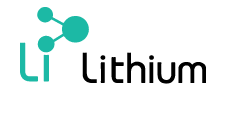
The Professionalism and Expertise to engage with Lithium is Commendable.
[What we like best] …the responsiveness and clarity from NextBillion.ai on any issue raised or question asked. [NextBillion.ai] helps us have a predefined setup that helps us define the ETA basis the geo-coordinates for our vehicles. It helps us point to the nearest road when the geo codes are not exact.

NexBillion.ai Routing API
fast and easy to use
Switching from the Google Distance Matrix to Nextbillion.ai routing was easy and has made our app faster and more robust. In addition, the number of calls to the API to get the same result set has decreased dramatically. Nextbillion.ai takes fewer API calls than Google for the same result sets and is more responsive.

Professional Geospatial Data Processing and Support
We admire NextBillion.ai's fast response and friendly manners whenever we need professional support in geospatial data processing. They have delivered a valuable service and support to our company that we appreciate.
Integrate Seamlessly With
Top Enterprise Clouds, ERPs and CRMs






